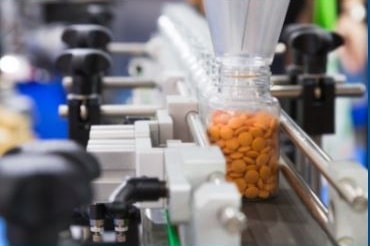Hong Kong-based Easy Health, which has been providing commercial packaging of food and drug products for over 20 years, plans to introduce five product packaging technologies, including smart packaging, that is expected to change the industry landscape.
This is part of the company’s bid in recent years to develop green packaging products that are environmentally friendly.
Challenges in using smart tech in food packaging
In a press statement released last Friday, the company acknowledged that while the application of smart technologies such as sensors, indicator tags and wireless frequency identification tags in the meet industry is booming, deploying them in a commercialised food packaging environment pose many challenges.
This is mainly because smart packaging needs to seek lower cost and easier technology, as well as contextual applications that can be accepted by consumers and producers, in order to truly open the market for smart packaging.
“At present, the most practical technology that can be applied to food smart packaging is mainly the indicator, and a few products have been actually applied. This kind of products are mainly small product labels, which are based on the colour change technology that is visible to the naked eye. Today's applications are almost all time-temperature indicator labels (Time-Temperature Indicator; TTI), which mainly monitor the temperature and time during transportation and storage. The impact of changes on the content, there are other indicators for the freshness of fruits and vegetables, pH change labels, etc,” the company said.
An eye on intelligent processing
Another new technology that Easy health has its sights on is what it called “adaptive packaging”, which seeks to simulate the environmental parameters required to maximise the storage and quality of food. This involves automatically adjusting the environmental parameters such as temperature, humidity, pressure and gas composition among others.
“This is also an intelligent processing and packaging technology. This technology consists of two parts: materials and processes. Some environmental parameters rely on chemical adjustment, some rely on biological adjustment, and some rely on physical adjustment. Therefore, this technology is currently the most complete packaging technology, and it is also the most difficult technology to achieve and control,” the company said.
Headquartered in Kwai Chung, Easy Health uses advanced automated packaging equipment alongside its B internal packaging production monitoring system, the status of the goods can be checked anytime and anywhere. The company holds several international certifications for safety standards such as HACCP, ISO9001, ISO22000, ISO22716 and USFDA.
Besides packaging, the company provides warehouse management and other logistics services, customising them for customers for a one-stop solution. For the highly competitive FCMG industry, it even arranges can arrange an independent factory and a dedicated team as per customer request.
Water-soluble and edible packaging
Easy Health is also looking into packaging made of water-soluble materials as an alternative to traditional plastic packaging. Water-soluble packaging is compostable, biodegradable, non-toxic and harmless to the environment, and helps reduce the amount of garbage,
“The main ingredient is water-soluble material Polyvinyl Alcohol (PVA). Natural materials such as cornflour, glycerine and water are also added. PVA is a water-soluble synthetic plastic. It can also be degraded by microorganisms in a full water environment, in composting facilities, and in soil, and decomposed into carbon dioxide and water.
“It returns to the ecosystem without generating microplastics. Just pour hot water above 80 degrees on the water-soluble package, and it will be completely dissolved in the water after a few minutes. After being dissolved in hot water, it can be poured directly into the sink. At the same time, it can be slowly decomposed in cold water or room temperature water,” the company said.
Furthermore, Easy Health is exploring the potential of edible packaging with ingredients such as starch (C6H10O5)n, gelatine, a small amount of lecithin.
“The human body eat rice paper, the enzymes in the mouth will immediately break down rice paper. The main functions of edible films are: isolating bacteria from entering food; preventing food from being exposed to moisture in the air; and, preventing food from melting and sticking to the product packaging at high temperatures,” the company explained.
Finally, the company has fixed its sights on self-cooling & self-heating packaging.
“Just press the button on the package, and the liquid in the self-cooling tank can be cooled in a few minutes. It is equipped with a small-compressed container. When it is opened, the volume of CO expands rapidly, and the temperature of the beverage can be reduced to 4.4°C within 9 seconds. Self-heating packaging can heat the food in the packaging to the temperature you need within a few minutes,” the company said.



